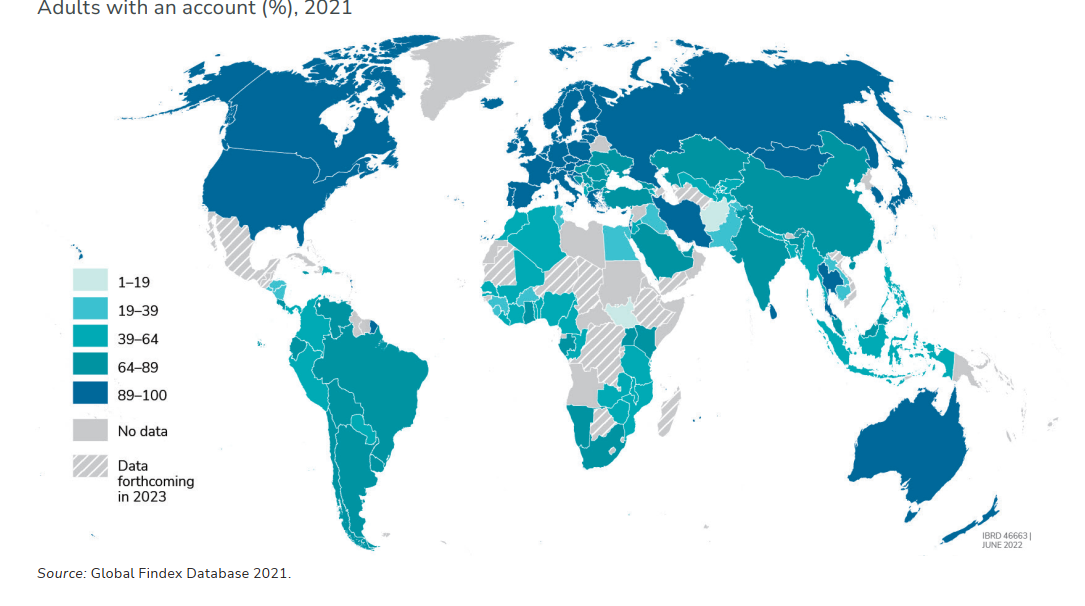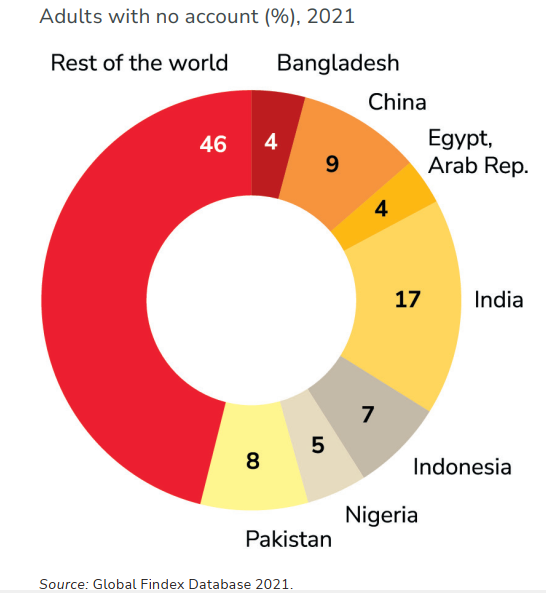
Between 2011 and 2021, the percentage of the world’s adult population with bank accounts rose from 51% to 76%, according to the latest World Bank Global Financial Index findings. However, about 1.4 billion adults remain unbanked, without the necessary funds or identification to open a bank account.
Mobile Money Narrows Financial Exclusion Gap in Sub-Saharan Africa
According to the 2021 Global Financial Index (Findex) Survey Results76% of the world’s adult population now has a bank account, up 50% from 51% in 2011. In developing countries, the average account ownership rate increased by 8 percentage points between 2017 and 2021, from 63% to 71%.

Previously, China and India have accounted for most of this growth, but the latest research report notes that “recent account ownership growth has been across dozens of developing countries.”
For sub-Saharan Africa, where a significant portion of adults without bank accounts are found, the survey results state that “55% of adults have accounts, 33% of whom have mobile money accounts.” According to the survey, this is “the largest share of any region in the world and more than three times the global average of 10 percent mobile money account ownership.”
There are about 11 economies in the region that have a high percentage of adults who “only have mobile money accounts, not bank or other financial institution accounts. In addition to helping adults without bank accounts, mobile money may have created an opportunity to better serve marginalized groups, the study report said.
Enabling infrastructure has an important role.”
Despite these encouraging results, however, research studies show that as many as 1.4 billion of the world’s adult population still lacks bank accounts. Reasons for this include lack of money, distance to the nearest financial institution, and lack of identification documents required to open an account.

However, the barriers that prevent hundreds of millions of adults from opening bank accounts can be overcome if enabling infrastructure becomes available, the research report concludes.
“Enabling infrastructure plays an important role. For example, global efforts to improve reliable identification systems and comprehensive access to cell phones can be leveraged to increase account ownership among hard-to-reach populations,” the research report’s summary states.
In addition, the “lead actors” in efforts aimed at further reducing the number of unbanked adults “must also invest in regulation and governance to ensure that safe, affordable, and convenient products and features are available and accessible to all adults in their economies,” the summary argues.
The report, like many other reports and studies to date, concludes that the Cobit 19 pandemic has spurred increased adoption and use of digital payments. In support of this claim, the report points to India, where more than 80 million adults were forced to pay at digital stores for the first time due to restrictions on the movement of people. The trend appears to be similar in other developing countries. Excluding China, “20% of adults (in developing countries) made digital merchant payments in 2021.”
Sign up for email here to get weekly African news sent to your inbox.
Image credits: Shutterstock, Pixabay, Wiki Commons














